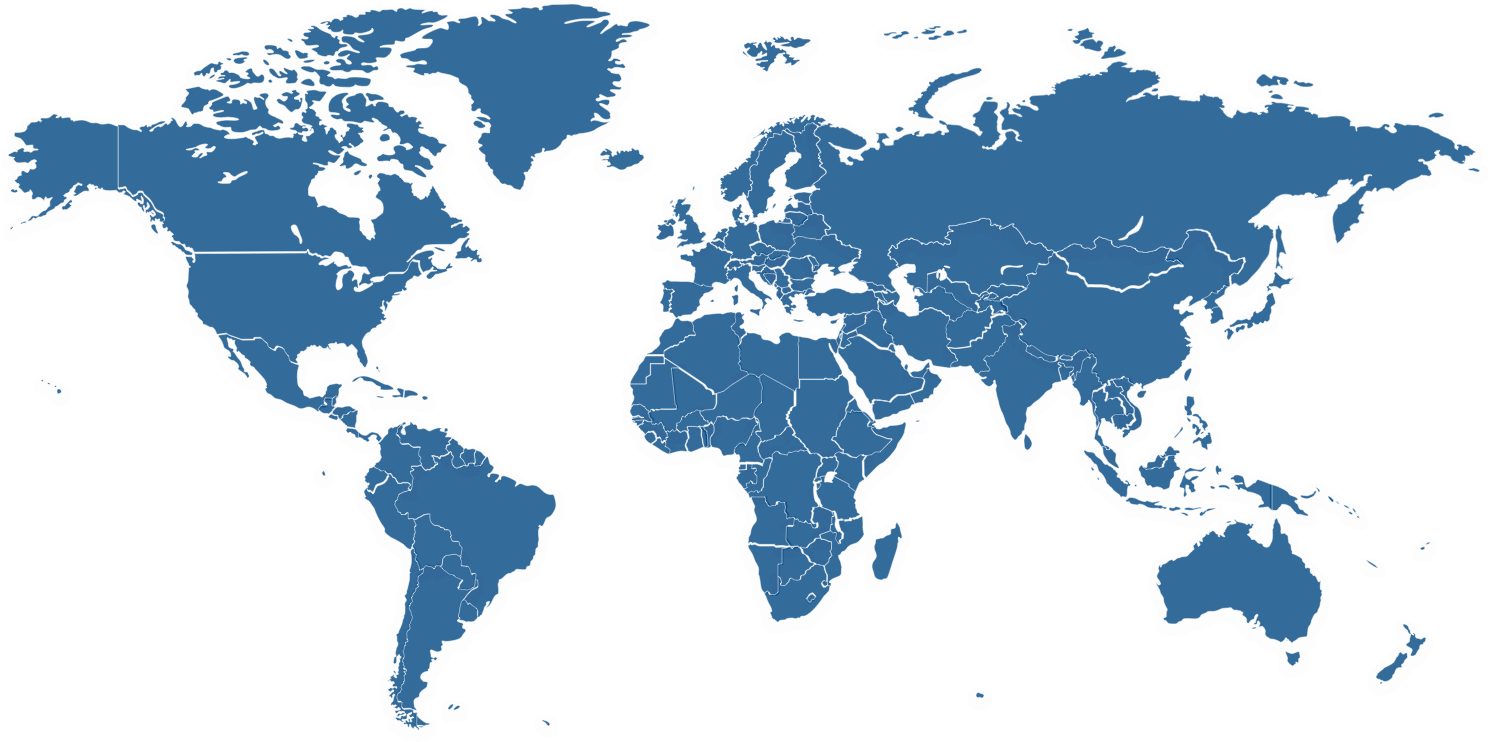Event reports
Historical context
Recognizing that the biological resources of the earth are fundamental for the economic and social development of humankind and that biological diversity is an invaluable global good for the survival of present and future generations, the United Nations Environment Program (UNEP) convened an Ad Hoc Group of Experts on Biological Diversity in 1988 to explore the need for an international convention on biodiversity.
The Convention on Biological Diversity (CBD) is the result of this process and entered into force on December 29 , 1993. The CBD has three main objectives: conservation of Biological Diversity; the sustainable use of components of biological diversity; and the fair and equitable sharing of benefits arising from the use of genetic resources.
Cartagena and Nagoya Protocols
The CBD has two additional protocols: the Cartagena Protocol on Biosafety and the Nagoya Protocol on Access to Genetic Resources and the Fair and Equitable Sharing of Benefits Arising from their Utilization. The first is an international agreement to ensure the safe transfer, handling and use of living modified organisms (LMOs), taking into account its potential risks to human health. It was adopted on January 29, 2000 and entered into force on September 11, 2003. In turn, the Nagoya Protocol is an international agreement aimed at the fair and equitable sharing of benefits arising from the use of genetic resources and has entered into force on October 12, 2014.
COP
The Conference of the Parties (COP) is the highest governance body of the CBD, which brings together representatives of the state Party and key actors for the implementation of the Convention. The COPs promote the implementation of the Convention by the decisions it takes at its regular meetings. With regard to the most recent developments, a Strategic Plan for Biodiversity 2011-2020 was adopted, which includes the Aichi Targets for Biological Diversity. This plan provides a general framework on biodiversity, not only for biodiversity-related conventions, but for the entire United Nations system and all other partners committed to biodiversity management and policy development.
Aichi Targets
Aichi's twenty major targets for 2015 or 2020 are organized around five strategic objectives, which include topics such as loss of biodiversity, sustainable use of genetic diversity, increased benefits of ecosystem services for all, participatory planning, knowledge management and capacity building.
Some examples of the Aichi Targets are: at least halving and, if possible, zeroing the rate of loss of natural habitats, including forests; establishing a conservation goal of 17% of land areas and inland waters and of 10% of marine and coastal regions; Restore at least 15% of degraded areas through conservation and restoration; and make a special effort to reduce the pressures faced by coral reefs.
The goals and targets are both aspirations for achievement at the global level and a flexible framework for national or regional goal setting (Aichi Target 17). Parties were invited to set their own goals, taking into account this flexible framework while taking into account national needs and priorities and the country's contributions to achieving the global goals. In this sense, there is a great similarity between the Aichi Targets and the Nationally Determined Contributions (NDCs) under the Paris Agreement on Climate Change, due to its bottom-up approach. Countries are called to action and need to encourage the successful and coordinated planning and implementation of the NDCs and the Aichi Targets at the national level.
Multilateral Environmental Agreements
Indeed, the question "How can Multilateral Environmental Agreements work in synergy between different domains for sustainable development?" is of fundamental importance in the face of the intense progress made in recent years. This was the theme of one of the side events of COP13, organized by the Global Environment Facility (GEF). With the adoption of the the 2030 Agenda for Sustainable Development), together with the main global agreements in Aichi (Convention on Biological Diversity), Paris (Convention UN Framework Convention on Climate Change) and Ankara the United Nations Convention to Combat Desertification), countries are increasingly interested in pursuing integrated and cross-cutting opportunities for sustainable development. This workshop was attended by Dr. Braulio Ferreira de Souza Dias, CBD Executive Secretary, who pointed out that the Cancun Declaration, adopted unanimously, takes into account the required convergence in terms of climate agreements, complementarity of biodiversity, climate change and sustainable development. The link between the agendas is present, for example, in the link between biodiversity conservation and adaptation to climate change, the theme of another side event to COP13, organized by the National Institute of Ecology and Climate Change (INECC)|http://www.gob.mx/inecc] of Mexico.
COP 13 CDB Cancun
Mexico, venue for the 13th meeting of the Conference of the Parties (COP 13), the eighth COP-MOP of the Cartagena Protocol (COP-MOP 8) and the second COP-MOP of the Nagoya Protocol (COP-MOP 2), had among its objectives to pave the way for the transformation needed to achieve compliance with the Strategic Plan for Biodiversity 2011-2020 and the Aichi Targets, as well as a long-term vision of living in harmony with nature.
In addition, the Cancun Declaration incorporates an economic, social and cultural approach, including respect for nature and human rights through 18 actions. It also incorporates a commitment to update and implement biodiversity strategies and action plans, and to improve the regulatory framework for private sector activities.
Main results
After two weeks of intense work, the UN Summit on Biodiversity ended with 72 resolutions: 37 Decisions for the implementation of the Convention on Biological Diversity (CBD), 20 Decisions on the Cartagena Protocol and 15 Decisions related to the Protocol of Nagoya. Key discussions covered capacity building, protected area development, restoration, the marine agenda, use of pollinators, biodiversity and climate change.
Promotion of Capacity Building
To enhance capacity building, Parties welcomed the BioBridge initiative established at COP 12 and agreed on an action plan (2017-2020) based on the need to strengthen the implementation of the Strategic Plan for Biodiversity 2011-2020 and the Aichi Targets.
Protected Areas and Marine Agenda
With regard to protected areas, a greater commitment was reached by the Group of Like-Minded Megadiverse Countries (LMMC) and the announcement by Mexico on the creation of protected marine areas contributing to achieving 23% of marine areas within national jurisdiction, which is more than double the overall target of 10%. The Parties have also adopted a specific voluntary strategic plan to maintain and improve the resilience of ecosystems in cold water areas within the scope of the Convention. They also developed an action guide to improve understanding of the scale and impacts of marine debris, improve waste management and recycling, reduce plastic production and consumption, increase production of environmentally friendly materials, and more.
Restoration and Pollinators
Despite advances in protection, ecosystem degradation has also advanced a lot, which is why COP 13 has approved a short-term action plan for ecosystem recovery as a contribution to reversing biodiversity loss, regaining connectivity, increasing resilience of ecosystems, improving ecosystem services, combating desertification and improving human well-being, while reducing environmental risks and scarcity. It has also been agreed to improve the conservation and management of pollinators by addressing pollinator decline factors and working for sustainable food production and agriculture systems.
Biodiversity and Climate Change
COP 13 adopted a decision that welcomes the Paris Agreement and encourages governments to develop their Nationally Determined Contributions (NDCs), taking into account the importance of ensuring the integrity of all ecosystems. It also encourages Parties to take biodiversity into account when undertaking mitigation or adaptation measures to climate change and disaster risk reduction. On the other hand, it was reiterated the importance of reducing anthropogenic emissions by sources and increasing absorption by sinks of greenhouse gases under the United Nations Framework Convention on Climate Change, as well as the need for more research and exchange of knowledge , in order to better understand the impacts of climate-related Geo-engineering.
Traditional knowledge
A number of measures have been taken to ensure that traditional knowledge relevant to conservation and sustainable use is protected and its use is encouraged with the consent of indigenous peoples and local communities. Guidelines for the repatriation of traditional knowledge have also been adopted to help governments develop national mechanisms to prevent misappropriation of traditional knowledge.
In addition, Naoko Ishiim, Executive Director of GEF, highlighted the commitment of 167 countries to integrate biodiversity with other critical economic activities such as agriculture, fisheries, forestry and tourism. In addition, she reaffirmed the role of the GEF as a financial mechanism of the Convention, and urged them to continue their search for innovative forms of financing.
As we have seen, while there are central themes within the Conference, side events are also organized to address more specific issues. One such case is the integration between biodiversity and urban development. The quest for solutions based on nature for affluent communities is a challenge that many cities face today. Growth trends indicate that by 2050 there will be 9 billion people living in cities. How to expand the limited view of urban biodiversity as "park care" to optimize the natural resources coming to the city? It is important to understand that the future of livable cities depends on nature and appropriate management to be carried out in different areas such as design and architecture, water resources, transport and ecosystem services.
Participation of EKLA KAS
In the context of the COP 13 of the CBD, EKLA-KAS organized a working breakfast in Cancun to present the studies "Analysis of biodiversity policies and strategies in Amazon countries", carried out by the Peruvian Society of Environmental Law (SPDA), and "Innovation and Amazon - FAB LAB Floating Project in the Amazon", carried out by the FAB LAB Peru Association. The first publication responds to a need to systematize legal frameworks for the biodiversity of selected countries with Amazonian territory (Bolivia, Brazil, Colombia and Peru) while the second aims to analyze the implementation of a floating laboratory circulating the Amazon in order to create innovative solutions to the main problems in the Amazon region.
We believe that projects such as these contribute to the Strategic Plan for Biodiversity and, from the EKLA-KAS point of view, we have expanded our expectations to integrate the proposal of the Convention on Biological Diversity with the two main axes of our work: climate change and energy security.







